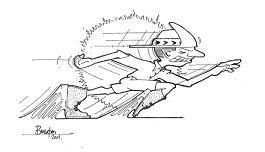Following a lazy-public-holiday-Monday-afternoon-nothing-better-to-do-than-watching-History-Channel, a quick poll. If you have never heard of this before, please do some research first before casting your vote...

The Shroud of Turin (or Turin Shroud) is a linen cloth bearing the image of a man presumed to be Jesus Christ who appears to have been physically traumatized in a manner consistent with crucifixion. It is kept in the royal chapel of the Cathedral of Saint John the Baptist in Turin, Italy. It is believed by many to be the cloth placed on the body of Jesus at the time of his burial, while others argue that the artifact may postdate the death of Jesus Christ by more than a millennium.
The image on the shroud is much clearer in black-and-white negative than in its natural sepia color. The striking negative image was first observed on the evening of May 28, 1898, on the reverse photographic plate of amateur photographer Secondo Pia, who was allowed to photograph it while it was being exhibited in the Turin Cathedral. According to Pia, he almost dropped and broke the photographic plate from the shock of seeing an image of a person on it.
The shroud is the subject of intense debate among scientists, people of faith, historians, and writers regarding where, when, and how the shroud and its images were created. From a religious standpoint, in 1958 Pope Pius XII approved of the image in association with the Roman Catholic devotion to the Holy Face of Jesus, celebrated every year on Shrove Tuesday. Some believe the shroud is the cloth that covered Jesus when he was placed in his tomb and that his image was recorded on its fibers at or near the time of his resurrection. Skeptics, on the other hand, contend the shroud is a medieval forgery; others attribute the forming of the image to chemical reactions or other natural processes.



